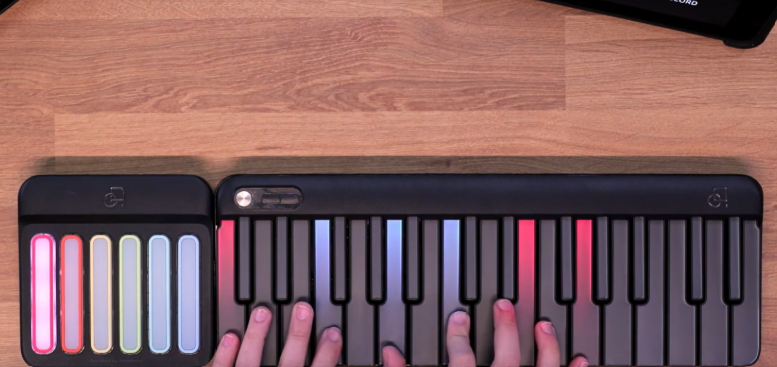
Ever wished the piano could lean over your shoulder and whisper, “Ps st… hit the next G‑sharp here”? That’s the basic idea behind a smart piano keyboard—an instrument that blends traditional keys with interactive tech so you can teach yourself, track progress, and even create your first song without splurging on weekly lessons. Pretty neat.
A smart piano keyboard is a digital keyboard with learning features baked in: light‑up keys, song‑syncing apps, real‑time feedback, Bluetooth MIDI, and often a companion community for sharing progress. In short, it’s both the instrument and the tutor rolled into one, a giant upgrade from old‑school black‑and‑white slabs that simply sat there waiting for inspiration.
Traditional digital pianos focus on accurately reproducing the weighty feel and tone of an acoustic piano—fantastic for purists. Smart keyboards shift that focus toward guided learning and portability, often using semi‑weighted keys and an on‑board sound library instead of simulated ivory.
You still get a respectable polyphony count (128–256 notes on the better models) but with a lighter frame and app integration tailor‑made for first‑time players.
|
Component |
Why It Matters to You |
|
Light‑Guided Keys |
Show exactly which note to press and when. Some models even change colors for left vs. right hand. |
|
Sound Engine |
Look for at least 128‑note polyphony if you fancy layering strings over pianos. |
|
Connectivity |
Bluetooth MIDI lets you hook into GarageBand, Logic, Ableton, or online lesson apps without cables. |
|
Learning App |
Tracks practice minutes, scores accuracy, and unlocks new songs as you level up. |
|
Onboard Speakers |
Handy when you don’t want to plug in an external amp—10–15 W total is fine for a bedroom. |
The PopuPiano Smart Keyboard by PopuMusic wraps the above features into a 29‑key main board that weighs about 3 lbs, with a clip‑on expansion adding 24 more keys once you’re ready for two‑hand repertoire.
And—the included PopuPiano app feels like a rhythm game, grading accuracy in real time and unlocking new songs as your score improves. That’s motivation gold for youngsters and adults alike.
If your dream is classical Chopin, you’ll eventually want 88 weighted keys and triple pedals. Still, many teachers recommend an entry‑level smart keyboard first because:
Not urgently. If you’re focusing on pop chords, semi‑weighted is plenty. For eventual classical technique, plan to upgrade or pick a hybrid smart keyboard with hammer action later.
Absolutely—you can just power up and play. But the app unlocks lessons, MIDI tracks, and progress tracking, so you’d miss half the fun.
Totally. It becomes a portable MIDI controller, songwriting scratchpad, or travel practice board, so it never gathers dust.
A smart keyboard includes interactive learning tools like light-up keys, app connectivity, and real-time feedback. A regular digital piano focuses mainly on replicating the acoustic piano feel and sound without built-in learning aids.
Yes. Many smart keyboards guide you through songs step-by-step using lights, app lessons, and progress tracking. While a teacher can still help with technique, the built-in guidance makes self-learning much easier.
Most smart keyboards connect via Bluetooth MIDI or USB, so they can be used with digital audio workstations (DAWs) like GarageBand, Logic, or Ableton for composing and recording.
Absolutely. The visual cues, gamified lessons, and fun practice features help keep children engaged and motivated, making it easier for them to build consistent playing habits.
Learning piano used to mean commutes to a teacher’s studio and rigid schedules. A smart piano keyboard flips the script: it waits for you, lights the path, and cheers each tiny victory.
Whether you aim to play pop covers, produce beats, or eventually tackle Beethoven, starting with technology that nudges—not nags—makes the journey a whole lot more fun. So fire up those LEDs, tap the first note, and let your living room become the coziest classroom in town.
Leer más

Best Cheap MIDI Controllers in 2025: Budget Picks for Beginners & Creators
Landing your first (or next) MIDI controller shouldn’t drain your wallet—or your creative spark. The 2025 crop of best cheap MIDI controllers proves you can score solid keys, pads, and knobs withou...

How Does a Light‑Guided Keyboard Work? Learn to Play Step by Step
Light‑guided keyboards look like regular digital pianos—until the keys start glowing and practically beg you to press them. The concept feels almost magical, yet the tech behind those dancing LEDs ...